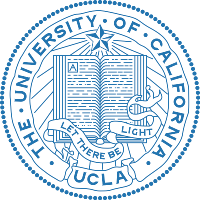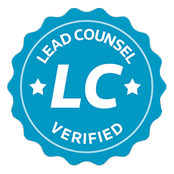Being involved in a car accident is a traumatic experience, especially if the at-fault driver is uninsured. While you may be able to file a claim with your own insurance provider under the uninsured motorist portion of your policy, the process can be complicated. Police reports play an important role in uninsured motorist claims by providing objective documentation of the accident details.
What is an Uninsured Motorist Claim?
Uninsured motorist coverage is a type of insurance protection required in most states. It covers injuries and damages that you incur when the at-fault driver has no liability insurance or not enough to fully cover your losses. This coverage is intended to put you in the same position you would have been in if the at-fault driver had adequate insurance.
When making an uninsured motorist claim, the burden of proof is on you to show that the other driver was at fault and uninsured. While your insurer is obligated to provide this type of protection, they still have an interest in minimizing payouts. Strong evidence is necessary to prove your case and receive full compensation.
Why Police Reports Are Important
Police reports can serve as vital evidence in uninsured motorist claims by providing an objective, third-party account of how the accident occurred. Here are some key reasons police reports are so important:
- Official documentation. Police reports carry legal weight as official government documents detailing the accident. They provide authoritative evidence that is difficult to dispute.
- Objective perspective. Police officers are neutral third parties with no bias or agenda. Their crash scene observations and determinations of fault can be far more objective than either driver’s account.
- Interviews and statements. The officer will interview both drivers and any witnesses to get statements while events are still fresh. These can help establish key facts about how the accident happened.
- Injury and damage documentation. Police reports will contain notes on visible injuries and document damage to both vehicles. This creates a record of the extent of losses.
- At-fault driver information. Reports will contain the other driver’s name, contact details, insurance status, and any citations issued. This information assists in claims against uninsured drivers.
- Scene diagrams. Many reports will have sketches mapping out the vehicles’ positions and points of impact. These diagrams can clarify disputed facts about the collision.
Having all this detailed information in an official report lends tremendous credibility and support to uninsured motorist claims.
What Details Do Police Reports Contain?
Most police reports will have core details relevant to uninsured motorist claims:
- Name, contact information and insurance status of both drivers
- Make, model and license plate numbers of vehicles
- Date, time and exact location of accident
- Weather and road conditions
- Direction of travel of each vehicle
- Sketches/diagrams showing vehicles’ positions
- Observations of vehicle damage and injuries
- Statements from drivers, passengers and eyewitnesses
- Officer’s determination of fault and citations issued
- Name and contact information for witnesses
For uninsured motorist claims, the most vital components are fault determination, confirmation of uninsured status, and documentation of damages/injuries. However, every factual detail can potentially help your case.
Why You Should Obtain the Report Immediately
It’s critical to get a copy of the police report as soon as possible after the accident. Here’s why:
- Avoid mistaken entries. Officers are human and occasionally make factual errors you will want to catch quickly. This can be harder to do later on.
- Encourage thoroughness. Requesting the report quickly emphasizes its importance, encouraging the officer to put full effort into its completion.
- Establish first impression. The officer’s original report often carries the most weight. Subsequent amendments may raise questions.
- Preserve fresh recollections. Details tend to get murkier over time. Early statements are most likely to be clear and accurate.
- Speed resolution. Quick access lets you move ahead promptly with your uninsured motorist claim while the report remains fresh.
- Avoid report changes. In some cases, the at-fault driver may try to pressure the police to revise the report in their favor later on.
The sooner you can review and obtain a copy of the police report, the better for building and supporting your uninsured claim.
Contact Our Injury Lawyers Today
Dealing with uninsured drivers adds challenges on top of the physical and financial hardships of an auto accident. With an attorney’s assistance, police reports can become a key element in establishing your right to fair compensation. If you were injured in a crash with an uninsured motorist, contact our office today to arrange a free consultation with an attorney. We have a successful track record of recovering maximum settlements for clients in uninsured motorist claims. Let our dedicated legal team go to work fighting for the damages you deserve.
Visit one of our offices at:
- Beverly Hills – 8383 Wilshire Blvd, Suite 830, Beverly Hills, CA 90211
- Los Angeles – 212 East Pico Blvd, Suite #4, Los Angeles, CA 90015
- Tulare – 100 E. Cross, Suite #122, Tulare, CA 93274
- Hanford – 13400 Hanford Armona Rd, Suite #B
Or call now for a free consultation on (877) 729-2652 or (323) 782-9927.














